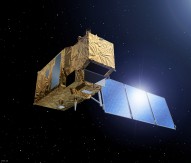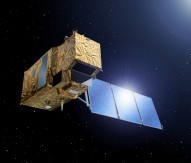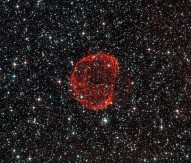
PROFILE: Exploring black holes
Black holes allow laboratories to investigate the existent paradoxes from three milestones in physics: gravity, thermodynamics and quantum mechanics.
Three milestones of the 19th and 20th Centuries in theoretical physics, thermodynamics, quantum mechanics and gravity, are incompatible among themselves. Thermodynamics describes all macroscopic matter systems, independently of the details governing the dynamics of the system at smaller, microscopic, scales. The latter is governed by quantum mechanics, which successfully accounts for all fundamental matter interactions in particle physics, when combined with the special theory of relativity, but also all chemistry, condensed matter and solid state physics. On the other hand, at distances where these interactions become subleading, gravity takes over and controls the dynamics of the Universe, as explained by the general theory of relativity. All three are extremely successful experimentally.
However, unfortunately, they are not consistent with each other. General relativity is a classical theory where the axioms of quantum mechanics do not hold. Is this a good enough reason for the search of quantum gravity? Perhaps not, but there are deeper ones.
First, general relativity allows singularities, regions of the Universe within reach in finite time where the notions of space and time end, to exist. The theory is not able to explain what physics are observed in these regions. Similar situations in classical electromagnetism were cured by quantum mechanics. Thus, we interpret Einstein’s theory as an effective one which needs to be replaced by a more complete theory at high energies.
Second, general relativity predicts the existence of black holes. These are solutions to Einstein’s equations providing a bridge between gravity and thermodynamics. In particular, the laws of black hole mechanics are identical to the laws of thermodynamics. This equivalence is based on the identification between entropy, a quantity measuring the amount of ignorance of a given macroscopic system or its number of microscopic degrees of freedom, with the area of the black hole event horizon (the region of spacetime from which not even light can escape the strong gravitational interaction due to the presence of the hole).
Is this a mathematical curiosity or does it point towards something deeper? Many of us believe it is the second. Indeed, all matter systems where thermodynamics holds allow a reinterpretation in terms of the microscopic degrees of freedom that underlie the system. For example, a gas in a room is described in terms of its temperature, energy and pressure. But, if we describe it in terms of the molecules making the gas, the thermodynamical variables we measure in the laboratory become statistical averages over all the molecule constituents. Since there are many of these, the law of large numbers in probability applies, explaining why the deviations from these averages are so small. This statement is known to be true for all matter systems and gives rise to statistical mechanics, another milestone of theoretical physics. Just as the entropy of a gas is explained in terms of the number of gas molecules, we can ask “who is responsible for the entropy of a black hole?” In other words, we could ask what the atoms of spacetime are. From this point of view, quantum gravity emerges as a response to interpret black hole thermodynamics from a microcanonical perspective in statistical mechanics.
That quantum gravity involves non-trivial physics stems directly from this deep connection. Hawking discovered that due to quantum mechanical effects, black holes radiate. That is, they lose energy in terms of radiation whose spectrum can be measured by a distant observer. This radiation is thermal. Thus, black holes behave as thermal states. This may look like a harmless discovery, but it is not, because quantum mechanics does not allow thermalisation. More precisely, if we start with a pure state describing all molecules in a gas, quantum mechanical time evolution will never generate a thermal state.
The same argument in black hole physics gives rise to the information paradox, leading Hawking to believe that quantum gravity was not unitary.
Our interdisciplinary project
String theory provides a mathematical framework where quantum mechanics and gravity are compatible. It has identified the degrees of freedom (D-branes) responsible for the entropy of certain (supersymmetric) black holes. Even more, it has counted their quantum microstates, finding precise agreement with the geometrical area of the black hole event horizon. These developments eventually led to the greatest discovery in the last 30 years in theoretical physics: the gauge/gravity correspondence. The latter provides a non-perturbative formulation of quantum gravity (in the presence of a negative cosmological constant).
Despite these successes, there are important challenges left. There is no mathematical formulation describing the physics of someone falling into the black hole. The axioms advocated in the 1990s give rise to further paradoxes, such as the recent notion of a firewall claiming that someone entering into an old black hole would actually burn when crossing the black hole event horizon. What is at stake here is not only the absence of loss of information in quantum gravity, but the matching of this fact with the locality of physics. That is, with the notion that all events in Nature happen somewhere and sometime, from the perspective of different observers. The gauge/gravity correspondence has not been able to explain the emergence of such locality. In particular, there are on-going controversies on whether the interior of a black hole allows for such a classical geometrical description.
One of the main purposes of this project is to understand the role of entanglement in all these matters. Entanglement is an intrinsic quantum property that does not exist in the classical world. It is responsible for the sharpest way to distinguish the quantum world from the classical one (Bell inequalities); it allows us to explain why macroscopic systems look so close to thermal when one is only concerned with measuring small pieces of it (foundations of statistical mechanics) and it allows faster, more efficient and secure ways of transmitting and securing information, which is at the heart of quantum computation.
In recent attempts to formulate quantum gravity, it has become apparent that entanglement seems to be related to the connectivity of spacetime, the ability to connect two points. The gauge/gravity duality reproduces highly non-trivial quantum mechanical results involving entanglement entropy (the entropy of a subsystem part of a larger one) by simply computing the area of extremal surfaces in spacetime, extending the notion of event horizons.
Furthermore, the well known non-locality in entangled states in quantum mechanics has been associated with a similar phenomenon known to exist in general relativity: the existence of short-cuts between points in spacetime, called wormholes, and which are indeed associated with the existence of non-trivial topology in spacetime.
It is interesting to develop these ideas further. In particular, using the techniques of quantum information theory, which quantify entanglement and define protocols that allow us to measure some of its properties, in black hole physics could help to uncover these mysteries and help us understand the very nature of spacetime. It is believed this is a necessary step towards an even more challenging problem: the understanding of quantum cosmology.
Measurability
Physics is an experimental science. There are two directions to measure physical effects regarding black holes. In astrophysics, even though black hole signatures are weak and noisy, the existence of firewalls could, in principle, be tested experimentally. In quantum information, the development of quantum mechanical resonators, matter-wave interferometry and spherical superconductor technology is allowing us to prepare arbitrary linear superpositions of quantum states describing massive objects located in different positions separated by the scale of the object itself. These experimental set-ups may allow us to test models describing the instability in the collapse of their wave functions in quantum mechanics when gravity effects may be relevant. Furthermore, they can also be used to test Newton’s law at smaller scales than known today and to probe the existence of gravitational waves. These are very exciting times for the scientific enterprise of developing the main building blocks of quantum gravity.

Dr Joan Simon
School of Mathematics
University of Edinburgh and Maxwell Institute for Mathematical Sciences
+44 (0)1316 508571





